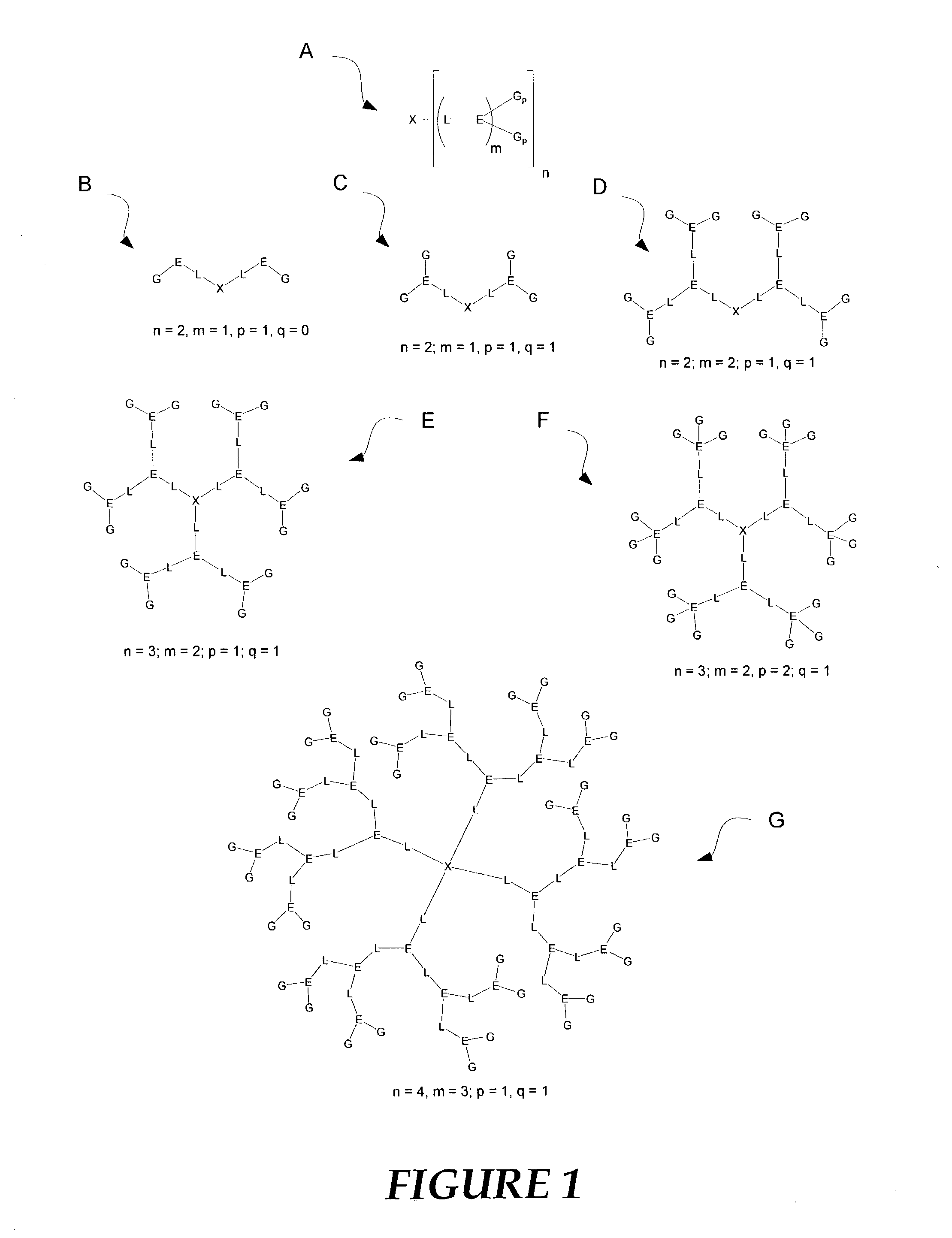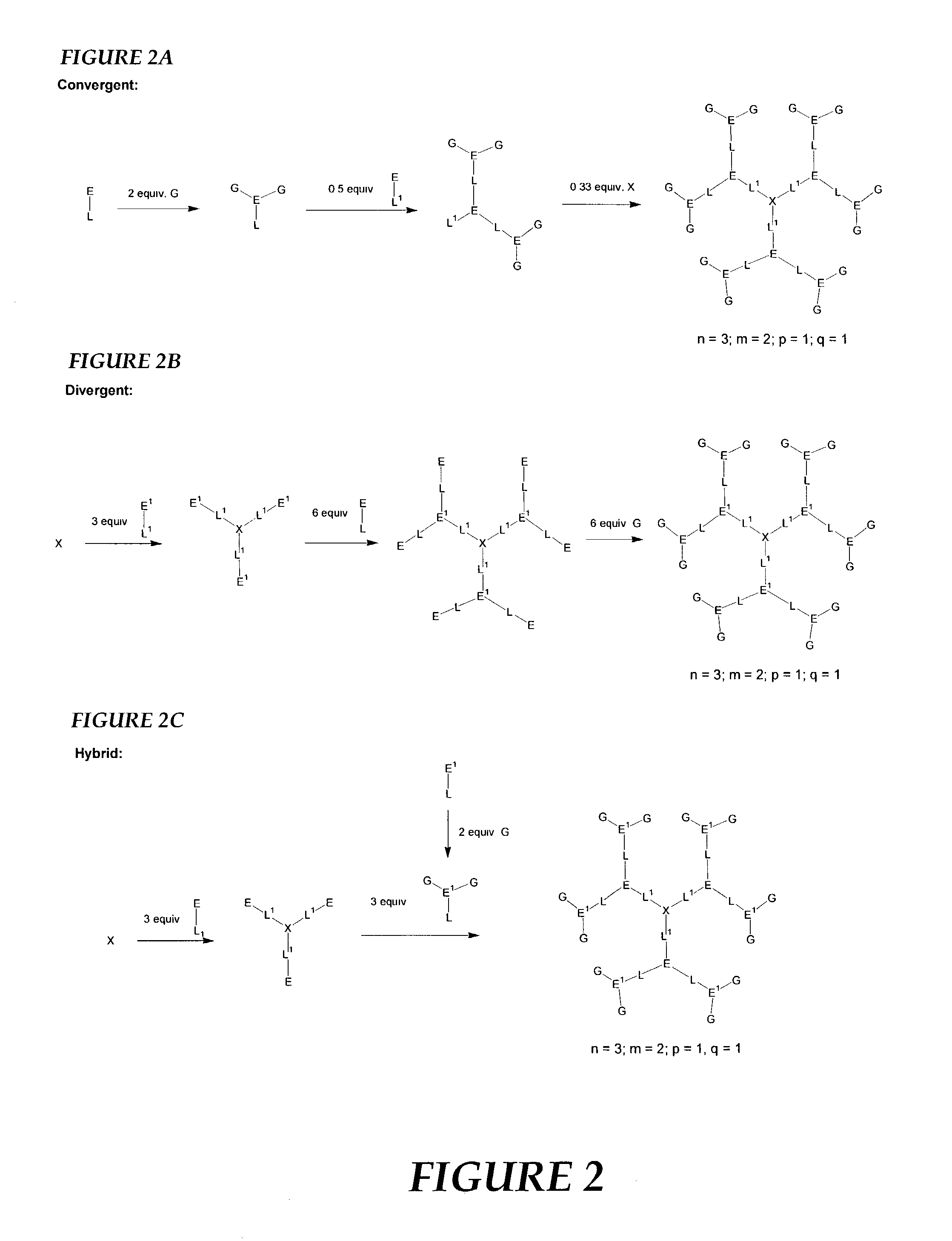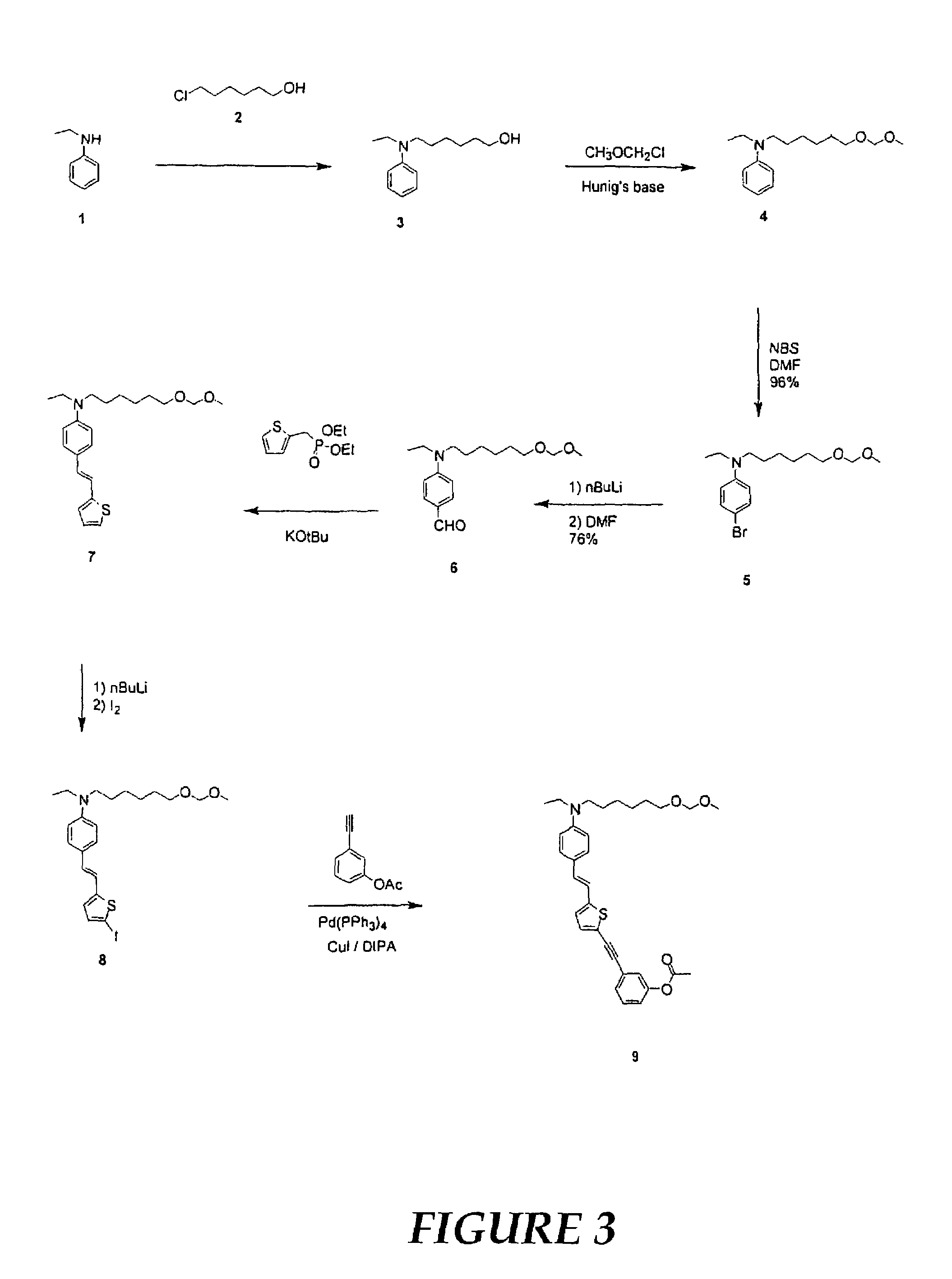Nonlinear optical compounds and related macrostructures
a macrostructure and optical compound technology, applied in the field of nonlinear optically active compounds, can solve the problems of increasing the index of refraction of the material, reducing the velocity of light traveling through the material, and mismatching of electrical and optical waves propagating in the material, so as to reduce the electrostatic interaction between chromophore and chromophore, and the effect of large optical nonlinearity
- Summary
- Abstract
- Description
- Claims
- Application Information
AI Technical Summary
Benefits of technology
Problems solved by technology
Method used
Image
Examples
example 1
Representative Multi-Chromophoric Dendrimer
Phenyl Tetracyanobutadiene Acceptor with Thiophene Bridge
[0107]In this example, the preparation and electro-optic properties of a representative multi-chromophoric dendrimer of the invention is described. The dendrimer includes three chromophores, each having an amino benzene donor, phenyl tetracyanobutadine acceptor, and thiophene bridge. The dendrimer also includes crosslinkable trifluorovinyl ether groups at the dendrimer's periphery. The synthetic procedures are illustrated in FIGS. 3-6.
[0108]To a well stirred solution of N-ethylaniline 1 (38.0 g, 0.31 mol) in n-butanol (200 mL) at room temperature, 6-chlorohexanol 2 (44.56 g, 0.33 mol) was added dropwise followed by the addition of potassium carbonate (45.00 g) and potassium iodide (cat. 1.40 g) with portions. After addition, the mixture was stirred at room temperature for 1 h and later refluxed for 96 h. At this time, the reaction mixture was cooled and filtered. The resulting solid w...
example 2
Representative Multi-Chromophoric Dendrimer
Phenyl Tetracyanobutadiene Acceptor with Bithiophene Bridge
[0129]In this example, the preparation and electro-optic properties of a representative multi-chromophoric dendrimer of the invention is described. The dendrimer includes three chromophores, each having an amino benzene donor, phenyl tetracyanobutadine acceptor, and bithiophene bridge. The dendrimer also includes crosslinkable trifluorovinyl ether groups at the dendrimer's periphery. The synthetic procedures are illustrated in FIGS. 11-13.
[0130]To a stirred solution of bithiophene (1.66 g, 10 mmol) in dry THF (32 mL) was added n-BuLi (4.2 mL, 10.5 mmol, 2.5 M) at −78° C. under nitrogen atmosphere. The solution was stirred at −78° C. for 1 h, and then transferred via cannula into a flask containing CuI (1.90 g, 10.0 mmol) cooled in dry ice bath. After the stirring at room temperature for 2 h, diethyl iodomethylphosphate (2.78 g, 10 mmol) was added. The reaction mixture was stirred at...
example 3
Representative Crosslinkable Chromophores and Related Macrostructures
Perfluorocyclobutyl Thermoset Polymers
[0141]In this example, the preparation and properties of a representative crosslinkable chromophores and their related macrostructures are described. The chromophores include crosslinkable trifluorovinyl ether groups and the macrostructure is a perfluorocyclobutane-containing thermoset polymer.
[0142]NLO chromophore-containing monomers were prepared in high yield by condensation reaction between di(trifluorovinylether)mesityl chloride and hydroxy-containing chromophores as illustrated in FIG. 16. Exothermic cyclodimerization of trifluorovinylether groups in these chromophores was typically detected at about 140° C. by differential scanning calorimeter (DSC) (10° C. / min) with reaction profiles similar to that of general di(trifluorovinylether) compounds. For example, the reaction of 43c showed a peak polymerization temperature at 243° C. and gave an enthalpy of −16 kcal / mol per p...
PUM
| Property | Measurement | Unit |
|---|---|---|
| drive voltage | aaaaa | aaaaa |
| wavelengths | aaaaa | aaaaa |
| wavelengths | aaaaa | aaaaa |
Abstract
Description
Claims
Application Information
 Login to View More
Login to View More - R&D
- Intellectual Property
- Life Sciences
- Materials
- Tech Scout
- Unparalleled Data Quality
- Higher Quality Content
- 60% Fewer Hallucinations
Browse by: Latest US Patents, China's latest patents, Technical Efficacy Thesaurus, Application Domain, Technology Topic, Popular Technical Reports.
© 2025 PatSnap. All rights reserved.Legal|Privacy policy|Modern Slavery Act Transparency Statement|Sitemap|About US| Contact US: help@patsnap.com



